
- HOME
-
WEBSITE DESIGN
Graphics Design
- ECOMMERCE
- COURSES
- PORTFOLIO
- DIGITAL MARKETING
- MOBILE APP
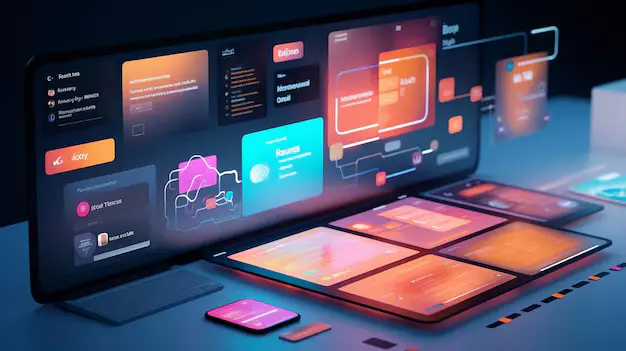
The web app development in Chennai is rapidly evolving, driven by the increasing demand for seamless online experiences. As technology advances, developers are focusing on creating user-friendly and efficient web applications that cater to the diverse needs of users. In this blog post, we will explore the latest trends and technologies that are shaping the future of web app development in Chennai.
Artificial intelligence (AI) and machine learning (ML) are increasingly being integrated into web apps to provide personalized experiences, enhance user engagement, and automate tasks. AI-powered features such as chatbots, recommendation engines, and predictive analytics are becoming more common in web apps. These features enable businesses to offer tailored experiences to their users, driving engagement and conversion.
For instance, chatbots powered by AI can help users navigate complex websites, provide customer support, and even complete transactions. Recommendation engines, on the other hand, use ML algorithms to suggest products or services based on user behavior, preferences, and interests. These features are not only enhancing user experiences but also driving business outcomes.
Progressive Web Apps (PWAs) continue to gain popularity due to their ability to deliver a native app-like experience on the web. PWAs offer fast loading times, offline capabilities, and push notifications, making them an attractive option for businesses looking to engage users across devices. With PWAs, users can access apps from anywhere, at any time, without the need for downloading and installing native apps.
The benefits of PWAs are numerous. They are cost-effective, easy to maintain, and can be developed faster than native apps. Moreover, PWAs can be easily discovered through search engines, making them a great choice for businesses looking to expand their online presence.
Voice User Interfaces (VUIs) are becoming more prevalent in web apps, allowing users to interact with apps using voice commands. This trend is driven by the increasing adoption of voice assistants such as Siri, Google Assistant, and Alexa. With VUIs, users can search, navigate, and interact with apps hands-free, making it easier to access information and complete tasks.
VUIs are particularly useful for tasks such as searching, making appointments, and sending messages. They can also be used to control smart devices, play music, and access information on-the-go. As voice technology advances, we can expect to see more innovative applications of VUIs in web apps.
Blockchain technology is being explored for its potential to enhance security and transparency in web apps. Blockchain can be used for secure data storage, verification of transactions, and creating decentralized applications. By leveraging blockchain technology, businesses can build trust with their users, ensure data integrity, and prevent data breaches.
One of the most promising applications of blockchain is in the development of decentralized apps (dApps). dApps are built on blockchain networks, allowing users to interact with apps in a secure, transparent, and decentralized manner. As blockchain technology matures, we can expect to see more innovative applications of blockchain in web app development.
Augmented reality (AR) and virtual reality (VR) are being used to create immersive experiences in web apps. These technologies are particularly popular in industries such as gaming, e-commerce, and education. By leveraging AR and VR, businesses can create interactive and engaging experiences that drive user engagement and conversion.
For instance, AR can be used to create interactive product demos, allowing users to try out products virtually before making a purchase. VR, on the other hand, can be used to create immersive learning experiences, making complex concepts easier to understand and retain.
The rise of low-code and no-code development platforms is making it easier for non-technical users to create web apps. These platforms allow users to build apps using visual interfaces and pre-built components, reducing the need for coding skills. Low-code and no-code development platforms are particularly useful for businesses looking to develop apps quickly and cost-effectively.
Low-code development platforms such as Bubble, Webflow, and Adalo offer a range of features and tools that enable users to build apps without coding. No-code development platforms such as Wix, Squarespace, and Weebly offer drag-and-drop interfaces that make it easy to build apps without coding.
With the increasing diversity of devices and platforms, there is a growing demand for web apps that can run seamlessly across different devices and operating systems. Cross-platform development frameworks such as React Native, Flutter, and Xamarin are being used to create web apps that offer a consistent experience across platforms.
Cross-platform development enables businesses to reach a wider audience, reduce development costs, and improve user engagement. By leveraging cross-platform frameworks, developers can build apps that run on multiple platforms, including iOS, Android, and web.
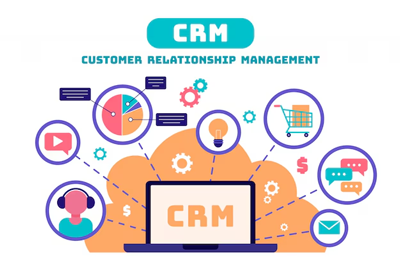
A CRM (Customer Relationship Management) system designed for start-ups and small businesses can help streamline customer interactions and data management. By collecting data from various sources like email, social media, and website interactions, this web app can provide a centralized database for customer information, enabling businesses to better understand their customers and make informed decisions.
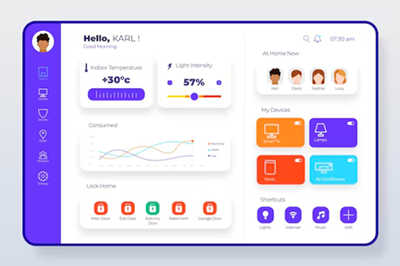
A CEO dashboard aggregates key business metrics such as revenue, expenses, sales, and customer acquisition data into a visual interface. This web app can include charts, graphs, and KPIs (Key Performance Indicators) to allow CEOs to quickly assess the health of the business and make informed decisions. Future improvements can include integration with AI and machine learning for predictive analytics, expansion to include more granular metrics, and real-time data updates for timelier decision-making.
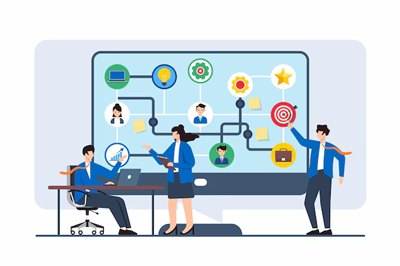
An employee orientation software can enhance the onboarding process for new hires by providing essential information, training materials, and access to necessary tools and systems. By incorporating VR/AR technology, this web app can offer immersive onboarding experiences, personalized learning paths based on employee roles, and seamless integration with HR systems for efficient data transfer.
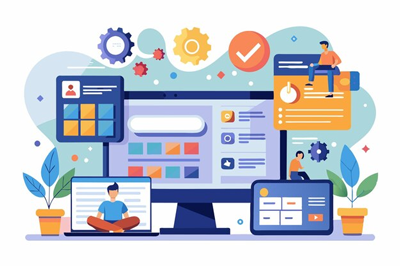
A project management platform enables teams to collaborate on tasks, set deadlines, track progress, and communicate effectively. This web app often includes features like task assignment, file sharing, and Gantt charts. Additionally, it can offer integration with AI for smart task assignment and resource allocation, advanced analytics for project performance prediction, and integration with IoT devices for real-time project monitoring.
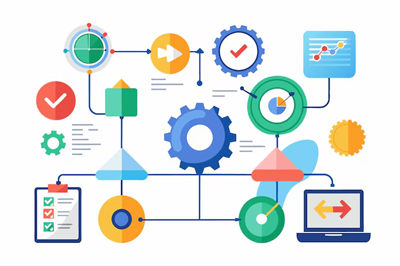
A workflow automation tool automates repetitive tasks such as data entry, email responses, and document generation, freeing up time for employees to focus on more strategic activities. By integrating with RPA (Robotic Process Automation), this web app can handle more complex automation tasks, utilize AI-powered decision-making for workflow routing, and expand to include cross-platform automation.
As we look ahead to 2024, it's clear that web development will continue to play a vital role in shaping the future of industries. From productivity and business to finance, these high-impact web app ideas have the potential to disrupt the status quo and unlock new opportunities. By identifying potential areas of innovation and staying ahead of the curve, businesses can leverage web app development to drive growth, enhance collaboration, and streamline operations. Whether you're a start-up or an established enterprise, the possibilities are endless, and the future is bright.